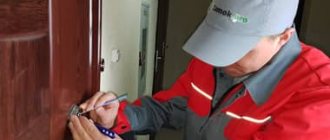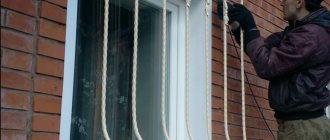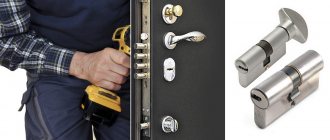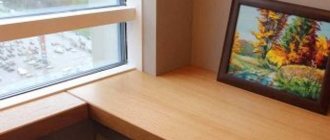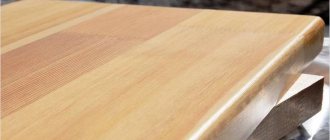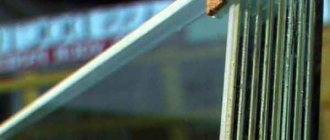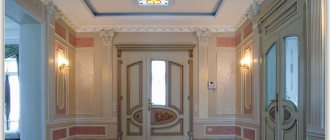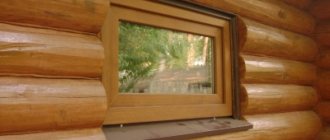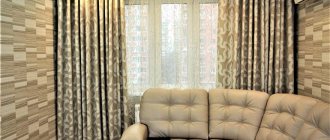Within one day, our company will manufacture and deliver throughout Moscow high-quality fillings for plasticine made of duralumin or brass, which will 100% meet your needs and objectives.
The imprint of such a product can be placed on various materials:
- Wax and mastic. They are often used in the manufacture of souvenir and decorative products - invitations and gifts in the old style. Printing products are made of metal cliches equipped with a long wooden handle. Such a handle not only has an aesthetic function, but also allows you to avoid burns when working with hot material.
- Plasticine. The impression is pressed on a hanging die, a rod device or a universal sealing device “under the thread”.
Aluminum seal with ring
Brass seal with ring
Double-sided brass stamp
Metal seal made of aluminum with text
Metal seal made of brass with text
Metal ice cream with logo
You can order from us the production of a metal seal of any type, which will contain the necessary text and graphic symbols, logos, and images. The shape of the product can be different - a round cliche with engraving is complemented by a comfortable wooden handle or a holder ring for attaching to a bunch of keys. The design of the product will depend on its purpose and the materials on which the prints will be made.
Our specialists will transfer your sketch to the cliche or develop a layout for engraving from scratch in accordance with your wishes.
Metal seals for sealing
Metal seals, also called brass and mastic seals, are used to seal entrances, rooms, doors, safes, cabinets, containers and tube keys. An imprint made of plastic or mastic remains on the sealed item. This type of stamp is used in government agencies, banks, polling stations, and so on.
Requirements for metal stamps
There are no categorical requirements for the content of information on the engraving of metal seals. Most often, the name of the company or the surname, first name and patronymic of the owner of the metal seal are indicated along the edge of the circle. In the central part of the seal indicate the room number or serial number. In addition to text information, metal seals may contain logos. This element allows you to create an original and unique look for prints.
There are different options for stamp diameters: 1.5 cm, 2 cm, 2.2 cm and 2.4 cm. The selection of the desired stamp diameter is made in accordance with the amount of text information. The most popular sizes are 2.2 cm and 2.4 cm.
The material for printing is most often brass type LS-59. In some cases, seals are made from aluminum.
How does sealing work?
To put a seal on the door of a room, you need to install a sealing device on the door surface or wall and place a piece of plasticine in it. When the door is closed, a thread (rod or flag, depending on the type of sealing cup) is placed in the mass of plasticine. Then the plasticine is pressed out with a mastic stamp.
Once the sealing process is completed, it is almost impossible for unauthorized entry into the premises.
In cases where a metal seal is used to seal tubes with bunches of keys, all the keys are removed inside the tube and the lid is pressed tightly. The next step is processing the seams with plasticine and pressing the print with a metal stamp.
What to look for when ordering a metal stamp
Sealing devices, including metal sealing seals, serve to protect against unauthorized entry into the premises, that is, they perform an extremely important function. For maximum reliability, such seals must be of high quality. Due to the constantly growing demand for this type of product, the number of proposals for the production of metal seals is increasing every day. At the same time, not every manufacturer can boast of full compliance with the standards and requirements for the manufacture of such products. There are frequent cases of counterfeit metal stamps being sold. To protect yourself from purchasing low-quality goods, you need to contact only well-established companies that have been operating in the stamp market for several years. In this case, there will be no problems not only with the quality of workmanship, but also with the production and delivery times.
Features: How to use plasticine for sealing
Plasticine is often used to apply fillings. This is a soft material that easily takes the desired shape, made from high molecular weight polyethylene.
For the impression they use sculptural plasticine, and sometimes the most ordinary one from a set for children's creativity.
The bars in the creative set are about 20 g. The sculptural one is sold in briquettes of 100 g or more, it can be purchased in specialized ones. craft stores. Sculptural plasticine can come complete with a die. Plasticine is used for sealing various devices, for example, cash registers - in this case it is used as a material for a permanent seal. When sealing safes or doors, it is often used as a temporary sealing material.
Plasticine has a number of characteristics that make it convenient and practical.:
- Non-toxic;
- It wrinkles easily;
- Keeps its shape well;
- Does not dry out;
- Sculptural plasticine tolerates temperature fluctuations well.
However, this material has its drawbacks: at low temperatures it is more difficult to knead and take the desired shape; may stain the surface. In cases where the use of plasticine is inappropriate, mastic is used. It can also be sold together with a die. It is also more resistant to temperature changes, does not stain and is denser in structure than plasticine and is suitable for hard fillings.
Sealing devices for doors and safes
Depending on the design of the door jamb, the sealing device most often used is a die-flag or a die-rod, made of duralumin or brass, as well as plastic. There is also an old, proven, budget option - a cord and a plasticine cup made of duralumin or plastic (previously a beer cap was used for these purposes).
To seal safes, various types of attachments are most often used. The type of device is determined by the design of the hinges on the safe or security considerations. For example, based on the secrecy mode, the sealing safe device can be sealed with 2 or more seals.
Flag and rod sealing devices are used for sealing the doors of premises, safes, warehouses, cabinet doors, etc. The flag die is used to seal a door located on the same level with the casing, the rod die is used for a door recessed into the door frame.
Made of brass or plastic, suitable for reusable use.
Mode of application:
Install the sealing device on the door casing or door, fill the volume of the cup with plasticine or mastic, then apply the seal using a seal (metal seal). When opening the door, the flag or rod will be damaged by a typo, which will indicate an attempt to open it.
Price:
sealing device flag, brass rod from 140 rub.
sealing device flag, plastic rod from 50 rub.
The keyhole sealing device is designed for sealing safes and metal cabinets.
Made from duralumin, suitable for reusable use.
Mode of application:
The fixed part of the sealing device is attached over the keyhole using screws, then the folding part is closed, a sealing wire is threaded into the slot, covered with mastic or plasticine and an imprint is made using a metal seal.
The cost of a sealing device for keyholes made of duralumin starts from 210 rubles.
The safe sealing device is used for sealing safes, cabinets, and doors.
Made of duralumin or plastic, suitable for reusable use.
Mode of application:
Thread the jumper through the door hinges, fill the entire volume of the bowl with plasticine or mastic, and apply typos using a metal stamp.
Price:
Sealing device for keyholes made of duralumin from 180 rub.
Sealing device for plastic keyholes from 70 rub.
You can place an order for sealing devices for doors and safes by phone, or by visiting our office at the address: Moscow, Narodnogo Opolcheniya st., 28, building 1 (metro station Oktyabrskoye Pole). Welton-S specialists will advise you on the purchase and use of sealing devices. You can also order from us the production of a metal seal, related products, and an engraved seal.
Special conditions for working with corporate clients, stamp manufacturers, advertising and design companies. Manufacturing of products of any complexity in the presence of the customer.
Electronic opening counters
These devices are installed on the inside of the door and work according to the following principle: every time it is opened, a counter is triggered, which increases its value by one. The number of openings is displayed on the LCD panel of the counter. Since opening counters allow you to record access to the contents of the safe, they are also called “electronic seals.”
The opening counter cannot be changed or reset, and visually noticeable damage cannot be avoided when attempting to dismantle it. In addition, the meter housing, electronic module and program code are marked with an individual factory serial number. This is done to protect against unauthorized replacement of the meter with another identical one.
Such counters are equipped, for example, with the VALBERG burglar-resistant series of safes - “RUBEZH” and “ALMAZ”. The model used here is DLC-100.
Printing for doors
The specifics of the professional activities of some organizations in Kyrgyzstan or the prevailing circumstances make the door sealing procedure mandatory. The process does not tolerate frivolity, since it has a very serious goal - the safety of property or control of access to particularly important or dangerous areas.
This is why it is so important to know how to seal a door correctly. The approach to solving the problem can be divided into two stages with the conventional names “Why?” And How?".
Why seal the door?
There are not many reasons for applying control marks to the entrances of work rooms or containers.
Unfortunately, the concept of “safety of contents” cannot be included in this list, since the integrity of property cannot be ensured by the sealing procedure alone. But this technique is necessarily included in a set of measures to ensure long-term storage of something.
How can you seal a door?
To understand how to properly seal a room or safe, let’s look at the currently known methods and materials.
Paper method
The cheapest sealing option involves gluing a paper strip with several imprints of the company’s main seal on it at the junction of the door leaf and frame. The advantage of this method lies in its unsurpassed accessibility - you do not need to purchase any special devices or materials.
Plasticine method
A more reliable and complex sealing method will require the purchase of special plasticine and a seal (a metal seal with a secret code or design). A layer of plasticine is applied to the control rod or the junction of the door with the opening formwork, and on top of it an imprint is made with the exclusive seal of the enterprise, company or organization.
It is possible to hack or open a room or safe saved in this way, but it will not be possible to hide this fact, since special means will fully play a controlling role.
Wire-lead method
Using wire and a lead seal, you can reliably seal a space of almost any size: from a small box to giant production workshops. True, you will need to equip the door leaves with special ears.
A strong thread is threaded through these loops (ears), the ends of which are sealed with lead and clamped with a sealer. The impression left by the sealing device on the lead impression will help prevent unauthorized break-in of the sealed area or, if it does not stop the intruders, at least reveal what happened.
Sticker method
There are two types of tamper evident seals:
The 1st type of seal-sticker, after operation, leaves a mark on the surface being sealed “OPENED”, which is difficult to remove even mechanically, the indicator mark is resistant to detergents and chemicals.
The 2nd type of seal-sticker in case of unauthorized access is triggered by the manifestation of the signal word “OPEN” or “OPEN” over the entire area of the product.
Such seals are installed manually in a few seconds on the area of possible access and do not require additional technical means.
How long do these fillings last?
Premises, safes, offices, warehouses, and other objects and spaces are sealed both for long periods and on a daily basis. Using paper seals, you can provide cheap control where access boundaries need to be opened quite often.
Plasticine and wire methods are more often used for long-term preservation of the contents of zones of different sizes and purposes.
Remember also that it is better to order protective equipment and materials from one manufacturer - this way you will protect yourself from possible troubles in the operation of protective equipment. supplies a full range of necessary accessories and devices to ensure the safety of your property.
Now you can buy seal-stickers in Bishkek in our store.
How to seal a door?
The specifics of the professional activities of some organizations in Kyrgyzstan or the prevailing circumstances make the door sealing procedure mandatory. The process does not tolerate frivolity, since it has a very serious goal - the safety of property or control of access to particularly important or dangerous areas.
This is why it is so important to know how to seal a door correctly. The approach to solving the problem can be divided into two stages with the conventional names “Why?” And How?".
Why seal the door?
There are not many reasons for applying control marks to the entrances of work rooms or containers.
Unfortunately, the concept of “safety of contents” cannot be included in this list, since the integrity of property cannot be ensured by the sealing procedure alone. But this technique is necessarily included in a set of measures to ensure long-term storage of something.
How can you seal a door?
To understand how to properly seal a room or safe, let’s look at the currently known methods and materials.
Paper method
The cheapest sealing option involves gluing a paper strip with several imprints of the company’s main seal on it at the junction of the door leaf and frame. The advantage of this method lies in its unsurpassed accessibility - you do not need to purchase any special devices or materials.
Plasticine method
A more reliable and complex sealing method will require the purchase of special plasticine and a seal (a metal seal with a secret code or design). A layer of plasticine is applied to the control rod or the junction of the door with the opening formwork, and on top of it an imprint is made with the exclusive seal of the enterprise, company or organization.
It is possible to hack or open a room or safe saved in this way, but it will not be possible to hide this fact, since special means will fully play a controlling role.
Wire-lead method
Using wire and a lead seal, you can reliably seal a space of almost any size: from a small box to giant production workshops. True, you will need to equip the door leaves with special ears.
A strong thread is threaded through these loops (ears), the ends of which are sealed with lead and clamped with a sealer. The impression left by the sealing device on the lead impression will help prevent unauthorized break-in of the sealed area or, if it does not stop the intruders, at least reveal what happened.
Sticker method
There are two types of tamper evident seals:
The 1st type of seal-sticker, after operation, leaves a mark on the surface being sealed “OPENED”, which is difficult to remove even mechanically, the indicator mark is resistant to detergents and chemicals.
The 2nd type of seal-sticker in case of unauthorized access is triggered by the manifestation of the signal word “OPEN” or “OPEN” over the entire area of the product.
Such seals are installed manually in a few seconds on the area of possible access and do not require additional technical means.
How long do these fillings last?
Premises, safes, offices, warehouses, and other objects and spaces are sealed both for long periods and on a daily basis. Using paper seals, you can provide cheap control where access boundaries need to be opened quite often.
Plasticine and wire methods are more often used for long-term preservation of the contents of zones of different sizes and purposes.
Remember also that it is better to order protective equipment and materials from one manufacturer - this way you will protect yourself from possible troubles in the operation of protective equipment. supplies a full range of necessary accessories and devices to ensure the safety of your property.
Now you can buy seal-stickers in Bishkek in our store.
Let's sum it up
The most optimal for sealing safes are hinged devices that use loops for sealing. They are easy to use and quite reliable. Moreover, safes are often equipped with such hinges by default and do not require separate installation. The cost of such devices for November 2022 is from 120 rubles.
Keyhole sealing devices require installation and are limited to safes with key locks. If you have no idea how to attach 2 bolts to a safe or use a combination lock, the peephole is not for you. If this does not stop you, then this device will cost from 190 rubles.
Rod and flag type locking devices are, in my opinion, the least interesting. Firstly, they require installation. Secondly, not every safe can install such a device - the size of the safe's door frame must be larger than the working cup of the device, i.e., at least 30-35 mm. The cost of these devices today is from 150 rubles.
Electronic opening counters are interesting, of course, but the price tag is still biting - for the aforementioned DLC-100 counter in November 2017 they asked for 3,800 rubles. In addition, in my opinion, it is better when the seal is immediately visible, so that the attacker will once again think about whether it is worth opening the safe if this fact becomes known.
If you really need to seal the safe, but there are no devices for this and there is no time or opportunity to install them, you can use special seals with stickers.
Seals for sealing wax
Cost of making a new one:
Lost restoration price:
3000rub
- This includes:
- Making a layout
- Brass blank
- Wooden handle
- Engraving
- Dimensions:
Brass on ring:30, 35, 40, 45, 50mm
Veterinary mark (reverse engraving):
Seal for sealing wax 100 rubles. Promotion!
Sealing wax seals are a combination of a cliche and a handle. Area of use: creating wax seals on paper, fabric, metal, wood and many other materials. The base is made mainly from brass. To make pens, we use wood because it has low thermal conductivity (does not heat up during use). The impression is made on molten wax; after cooling, the composition hardens and becomes brittle. Wax seal is an affordable and very beautiful way to decorate your products or gifts. Previously, wax seals were used as a tamper-evident tool, but now significantly stronger security tools have appeared, and this method was intended to be decorative, but it looks very attractive.
Since we make them ourselves, the production time in most cases is 1 day.
Advantages of metal stamps
- Long service life and unlimited number of uses.
- Accuracy and readability of the print, the ability to apply fine lines and detail (for example, a company logo).
- Corrosion resistance.
- Resistant to high temperatures, which allows them to be used for impressions on wax.
- Durability and resistance to mechanical stress and scratches.
- Minimum production time.
- Affordable price.
- Ease of imprinting.
- Compact sizes.
